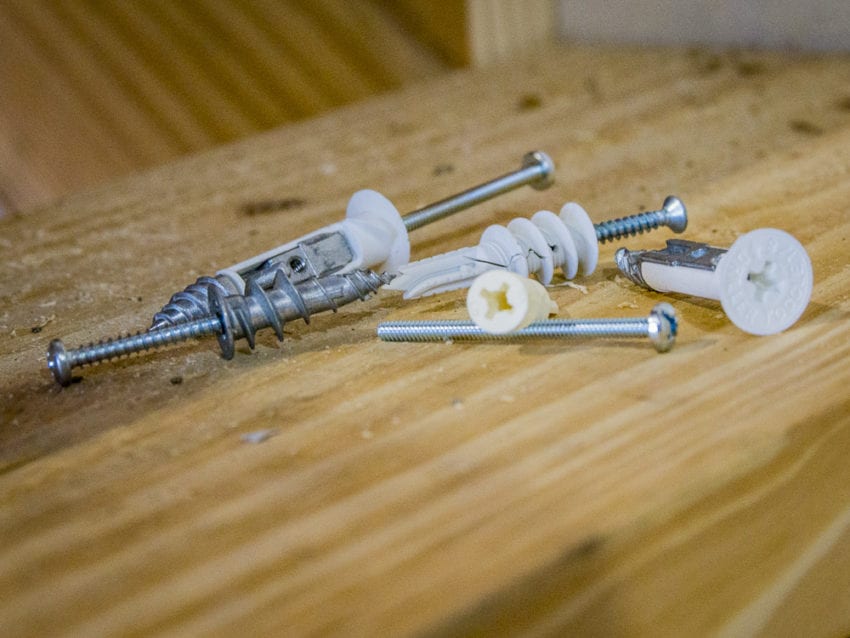So you’ve got some items to hang, but you don’t want them eventually falling off of your wall and shattering into a million pieces? Some type of drywall anchor will likely be your best friend. Commonly, you’ve got your plastic sleeve anchors, your self-drilling threaded anchors, molly bolts, and toggle bolt anchors. All of them accomplish the same general task by expanding and biting into or gripping the drywall. If you’re wondering how to use or install drywall anchors, we’ve got the basics covered for you.
Table of contents
Which Drywall Anchor Should I Choose?
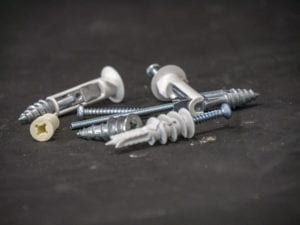
Generally, your drywall anchor selection will revolve around the weight of the item you wish to hang. While there are actually many types of drywall anchors available, some are more common than others. For the sake of brevity, we’ll stick with some of the more common types.
- Less than 10 lbs: plastic sleeve anchor
- 10 to 25 lbs: self-drilling threaded drywall anchors
- 25 to 50 lbs: Snaptoggle, molly bolts, or traditional toggle bolts
- Over 50 lbs: Snaptoggle, toggle bolts, or screw into an actual stud
There are some drywall anchors rated for 100 pounds or more. Use these with discretion and test them prior to hanging expensive items from them.
How to Use a Drywall Anchor
Installing A Plastic Sleeve Anchor
- With a pencil, mark the point where you want to hang whatever it is you’re trying to hang.
- Drill/make a pilot hole. You can use any variety of tools to accomplish this, though you need to make the pilot hole smaller than the width of the anchor. If a pilot bit doesn’t come with the set, the packaging will tell you which size to use.
- Stick the anchor in the pilot hole and tap it into place until the head of the anchor flushes up with the wall. A rubber mallet is best, but a small finish nailer will also work.
- Use a screwdriver to set the screw. You can use a drill, but go slow so you don’t overdrive it.
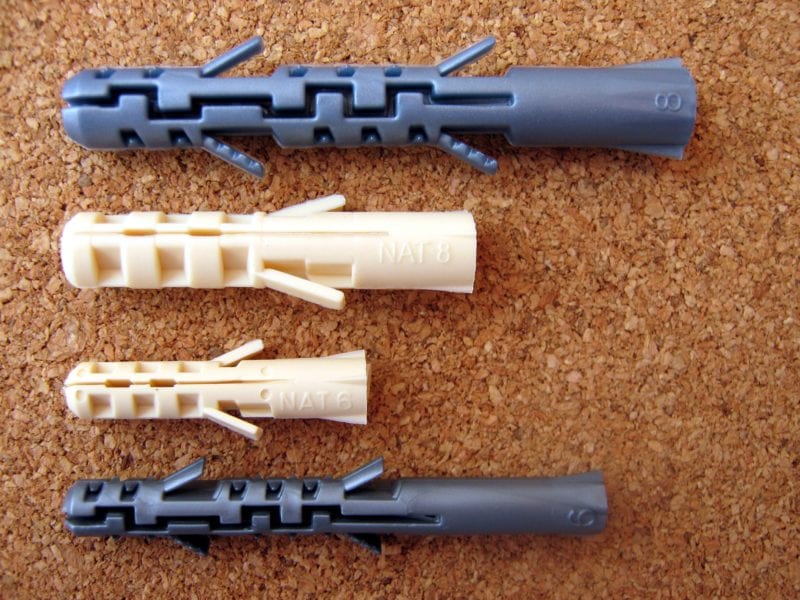
Installing a Self-Drilling Threaded Anchor
- Mark your hanging point.
- With a rubber mallet or hammer, lightly tap the anchor into the wall until you get to the threads.
- Use a screwdriver to screw the anchor into the wall until the head of the anchor is flush with the drywall. Again, if you opt to use a drill go slow and be careful.
- Set the screw to the depth you want with the same screwdriver or drill.
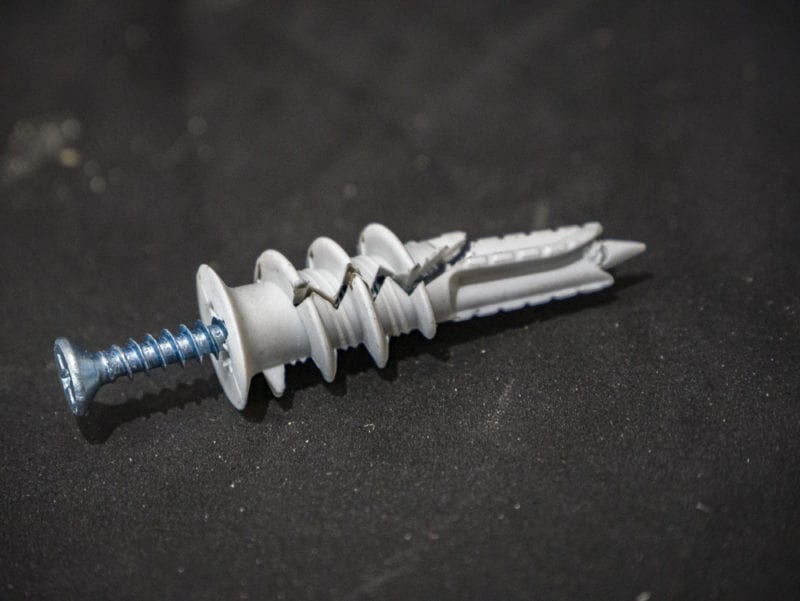
Anchoring With Molly Bolts
You’ve generally got two choices when it comes to molly bolts, or “hollow wall anchors”: pointed and un-pointed. The dull-tipped un-pointed anchors require you to drill a pilot hole into the drywall. Pointed tip styles don’t need a pilot hole; you can just tap these into place with a hammer. You might also find molly bolts with barbed heads. These barbs grip the surface of the drywall and keep the anchor from spinning in its hole.
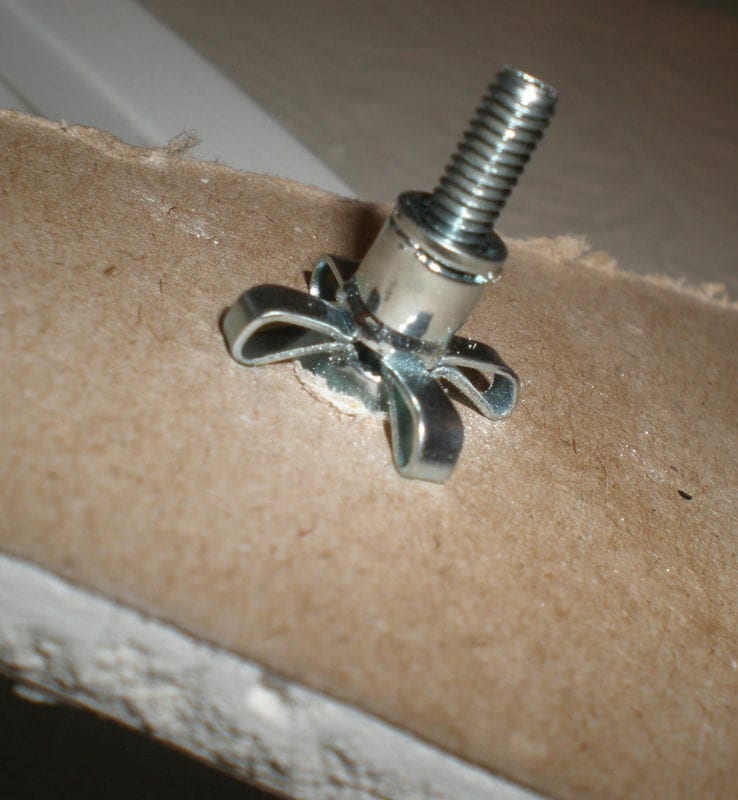
- Mark the point where you’d like to hang stuff.
- If a pilot hole is needed, drill one. Check the package to find out the size you’ll need for the pilot hole.
- After insertion, tighten the bolt in the sleeve of the molly. This will cause the legs to expand out and grip the other side of the drywall.
- Once you tighten down the molly bolt, back the screw out of the sleeve and hang directly from the head of the screw.
Installing a Toggle Bolt Drywall Anchor
When you’ve got heavier items to hang, but can’t find a wall stud to hang it on, toggle bolt anchors can save the day. Of course, there are a few things to be aware of before getting started. For one thing, you’ll have to drill a hole that allows for the toggles to pass through. This will require a hole that exceeds the width of the screw head, so toggle bolts can really only be used in conjunction with a bracket that will cover the hole. Also, while these drywall anchors can support a fair amount of weight, your softish drywall will fail if you put too much weight on it.
- Mark your hanging point.
- Drill a hole big enough to allow for the toggle bolt to slip through when in its folded position. The manufacturer instructions on the side of the box of toggle bolts should give you the necessary specs for drill bit widths.
- Put the bolt through the bracket you’ll be attaching to the wall. Then, thread the toggle onto the bolt with the tips facing the screw head.
- Squeeze the toggle closed and jam both the toggle and bolt through the wall. When the toggle clears the backside of the drywall, it will open up and grip the wall.
- Tighten the bolt until it’s snug.
Installing Snaptoggles
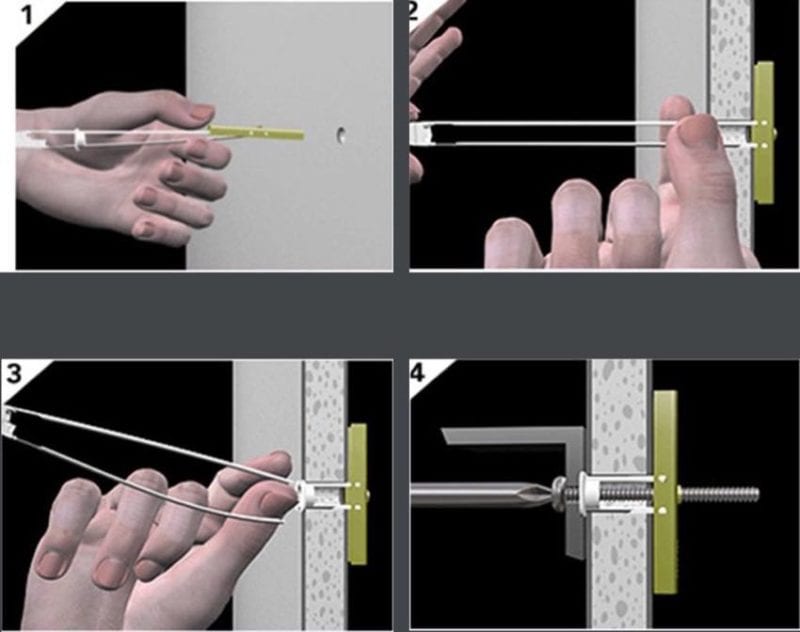
Even better than Molly bolts or toggle bolts, we love Snaptoggles. The reason is simple—you can remove the bolt and reinsert it as needed. This presents a huge advantage over traditional toggle bolts. They also install easier than Molly bolts in our opinion, though they have a couple of steps:
- Drill the correctly-sized hole.
- Slide the Snaptoggle’s metal channel through the hole.
- Hold ends of straps together and pull with one hand until the metal channel rests behind the wall.
- Ratchet the cap along the straps with your other hand until the flange of the cap is flush with the wall.
- With your thumb between the straps at the wall, push your thumb side to side, snapping off the straps level with the flange of the cap.
- Voila—place your item, insert the machined bolt, and tighten until snug.
What if the Drywall Anchor Hole is Too Big?
Sometimes you accidentally overdrill the drywall anchor hole. When this happens, you have several options:
- Pick up a larger drywall anchor
- Proceed with a washer if using a standard toggle bolt
- If using a threaded anchor, and the bolt or screw seems too small, grab a larger one and see if you can get a secure fit
Of course, you can avoid most of these problems by ensuring you follow the directions for recommended bits. We also recommend drilling as straight as possible and not “reaming out” the hole when you drill. This keeps everything at the intended size. If you drill too large a hole, you risk allowing the drywall anchor to spin when you insert the screw.
What Size Pilot Hole is Best for Drywall Anchors?
The great thing about drywall anchors is they pretty much tell you exactly what size hole to drill. For our recommended Snaptoggle and FlipToggle anchors, a 1/2-inch drill bit is needed. For self-tap drywall anchors, you can forgo the drill bit altogether.
Pay attention to the back of the packaging, and pick up the best drill bit at the store when you get the drywall anchors.
How Deep to Drill Pilot Holes for Drywall Anchors
When dealing with any kind of drywall anchor that requires pre-drilling, you really only need to worry about a couple of things. First, are you near a stud or simply drilling into a drywall cavity? Second, are you drilling into an exterior block wall or is there some other potential obstruction?
Typically, you only need to get through the drywall—which lends itself to a very simple and quick process. If, however, you have to deal with a stud, you may want to opt for an anchor that can also dig into the wood as needed. You want to make sure your hole depth matches the drywall anchor with at least an extra 1/8-inch to account for any protrusion of the screw out the back.
When dealing with exterior block walls, we recommend trying to pick up at least one side with a furring strip. We’ve found that 3-inch long Tapcon screws provide excellent hold for block walls, provided you follow the instructions and install them correctly.
Random Fun Drywall Anchoring Facts
- Your drywall will fail before the vast majority of drywall anchors will. The point here is that you probably shouldn’t use drywall anchors to mount your new 65″ UHD TV to the wall. You’ll want to find the wall studs for that project, or you will eventually face a very sad day.
- Drywall anchors come in a variety of lengths. It will benefit you to know how thick your drywall actually is so that you can plan accordingly.
- Drill bit measuring guides exist. If you don’t know the size of your anchor, you can use a drill bit measuring guide to match up sizes. You’ll want your pilot hole to be just a bit smaller than the anchor you plan to throw in it.
- Want to anchor into both drywall and studs, but don’t want to buy a whole separate box of anchors? Drywall and stud anchors exist, and they’re awesome. Also, inadvertently running into a stud with these won’t ruin the anchor.
- Many other varieties of drywall anchor exist, and some of them are better versions of the ones listed here. Take these Driller Toggle Anchors from Cobra, for an example. They work similarly to the toggle bolts we talked about but don’t require a pilot hole. The point is, explore the drywall anchor section of your hardware store. You’ll likely find some more streamlined approaches to some of the classic designs.
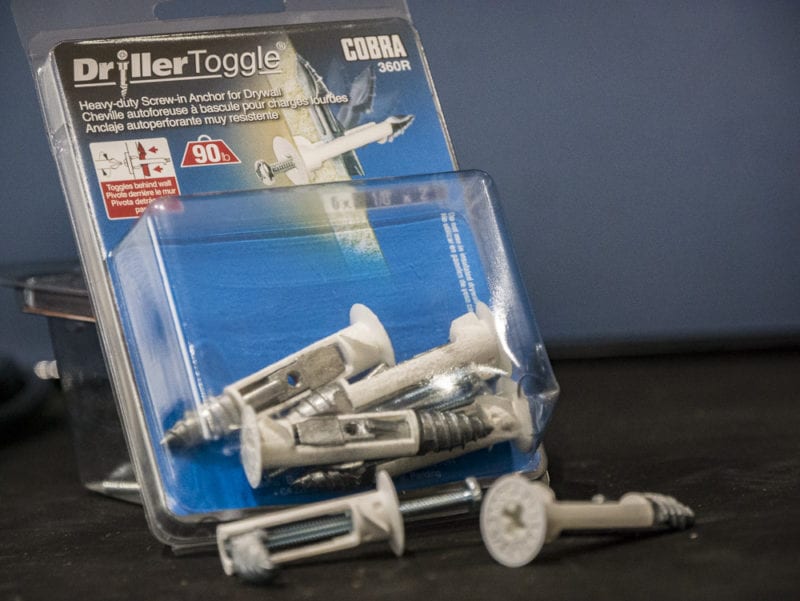
If you have any tips, tricks, questions about how to use a drywall anchor, feel free to leave it in the comments section below.

